Now that we’ve cleared up some of the popular myths about returning to running post-partum, let’s discuss some early exercises you can begin to do to work on pelvic floor strength, core strength, lower extremity strength and over all mobility.
IMPORTANT NOTE: These exercises should not begin until you’ve had your 6-week post-partum check up with your OBGYN to make sure you’ve properly healed. Ideally, you would be assessed by a physical therapist prior to beginning these exercises to ensure that you are appropriate to perform these movements and that you are performing them correctly.
Exercise 1 – Isolated Transversus Abdominus and Pelvic Floor Recruitment in sidelying and in quadruped (on all 4’s)
It is important to start by making sure you can properly recruit your pelvic floor and transversus abdominus muscle. This is much more subtle than many people think. In the post-partum population, I often see overuse of the obliques, which can cause excessive upper abdominal recruitment and ballooning in the lower abdomen.
To perform this exercise, start by lying your side. Relax your belly fully and then relax your pelvic floor muscles. From this position SLOWLY contract your pelvic floor (or kegel). You should see a small drawing in of the lower abdominals. Relax fully and try this again.

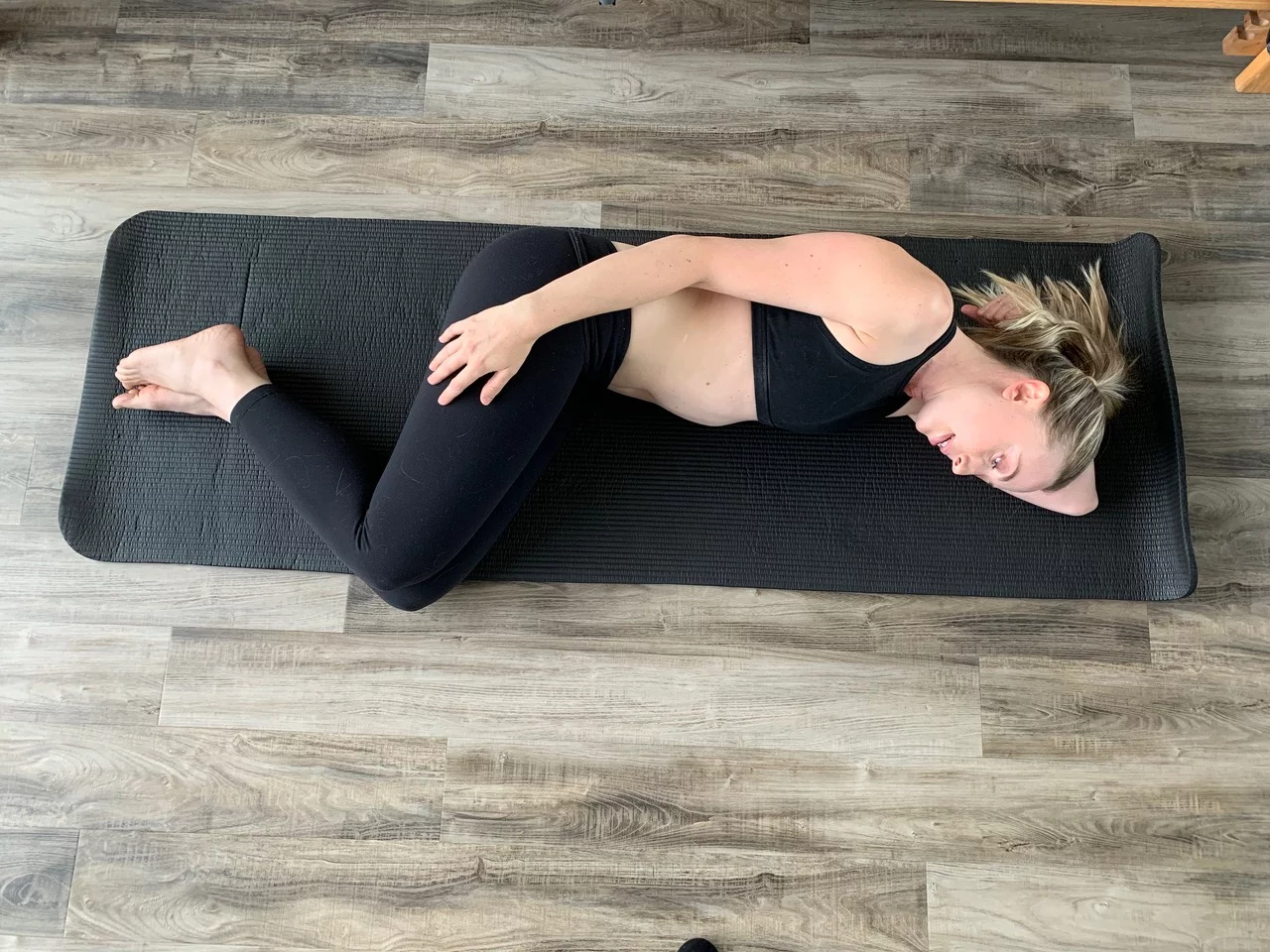
Now get on hands and knees and try the same thing. Relax your belly and your pelvic floor. From a relaxed position SLOWLY contract your pelvic floor (or kegel). You should see your abdominals drawing in slightly.
*If you see just your upper abdominals drawing in or you don’t see any movement, you may not be strong enough for this exercise in the all 4’s position, which is moving your abdominals against gravity.
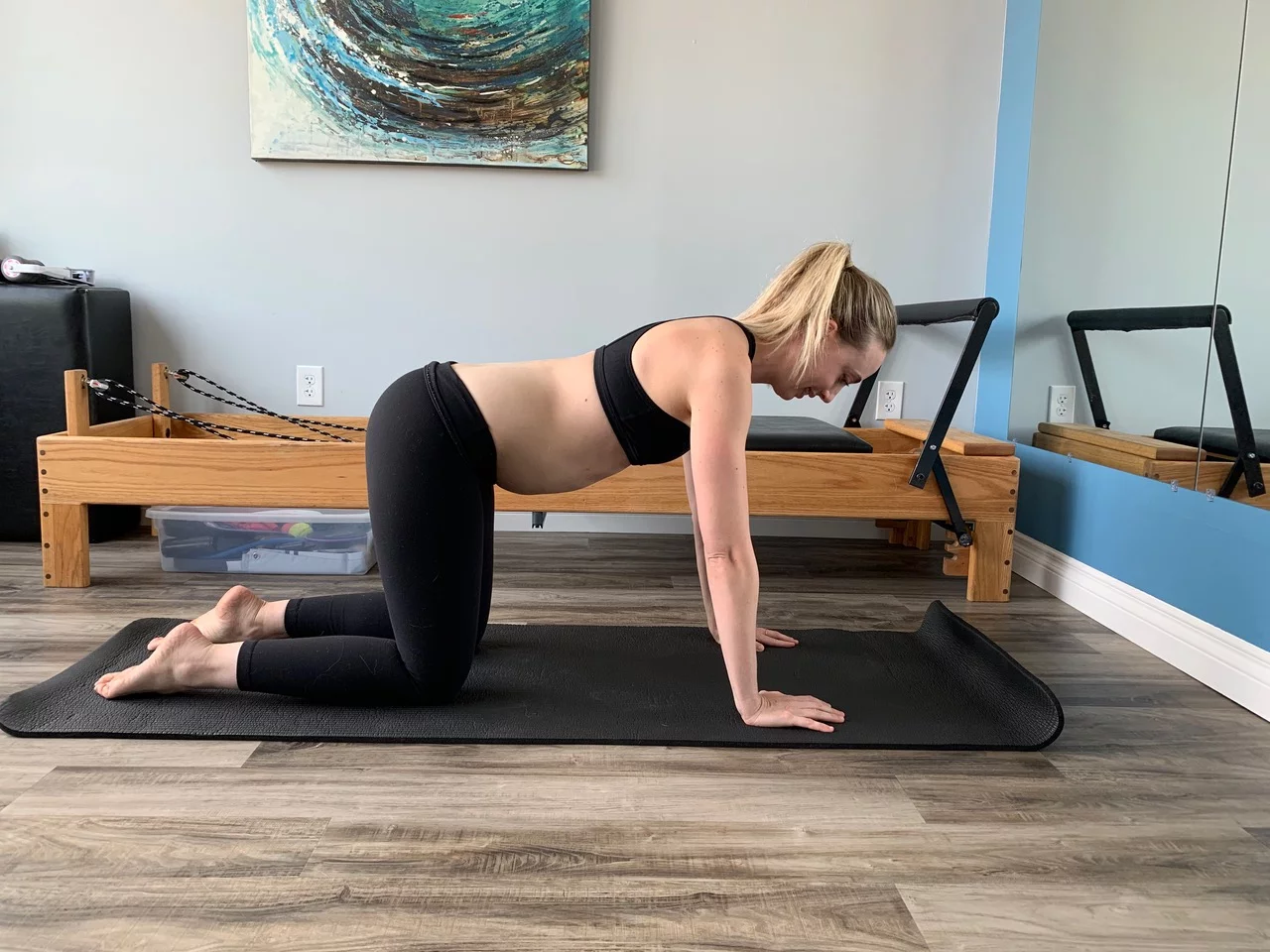
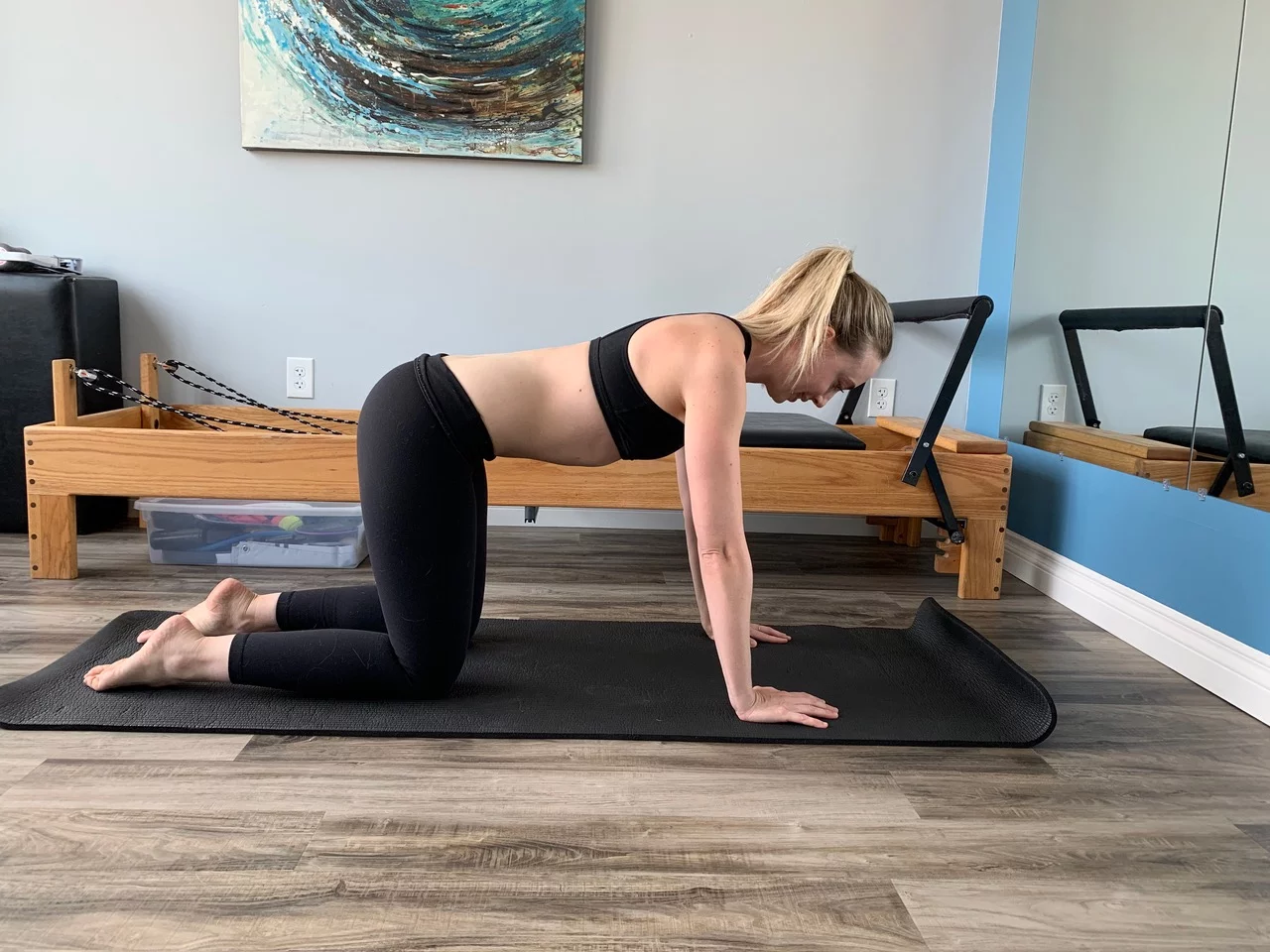
Exercise 2 – Hip flexor stretching (3 ways)
During pregnancy the hip flexors can get really tight or shortened due to changes in posture. As your belly grows it causes you to arch more in your back which can cause shortening of the hip flexor muscles. There are lots of different ways to stretch your hip flexors. Here are a few stretches to try:
1. Lunge hip flexor stretch on bed
Get into a lunge position next to your bed. Lift one leg up, lie flat and grab the foot behind you. You can use a strap around your foot if the stretch is too intense or you have trouble reaching your foot. You can intensify the stretch by squeezing your glut muscles on the side you’re stretching. If you feel this in your low back, make sure the opposite leg is far enough forward into the lunge. Hold for 30 seconds working up to 2 minutes on each side.

2. Standing quad stretch
In a standing position, grab your foot behind you. Make sure that your thighs are parallel, meaning the side you’re stretching is just as far back as your standing leg. Also make sure you are not arching too much in your low back. To avoid overarching squeeze the glutes as you hold the stretch. Hold for 30 seconds working up to 2 minutes each side.
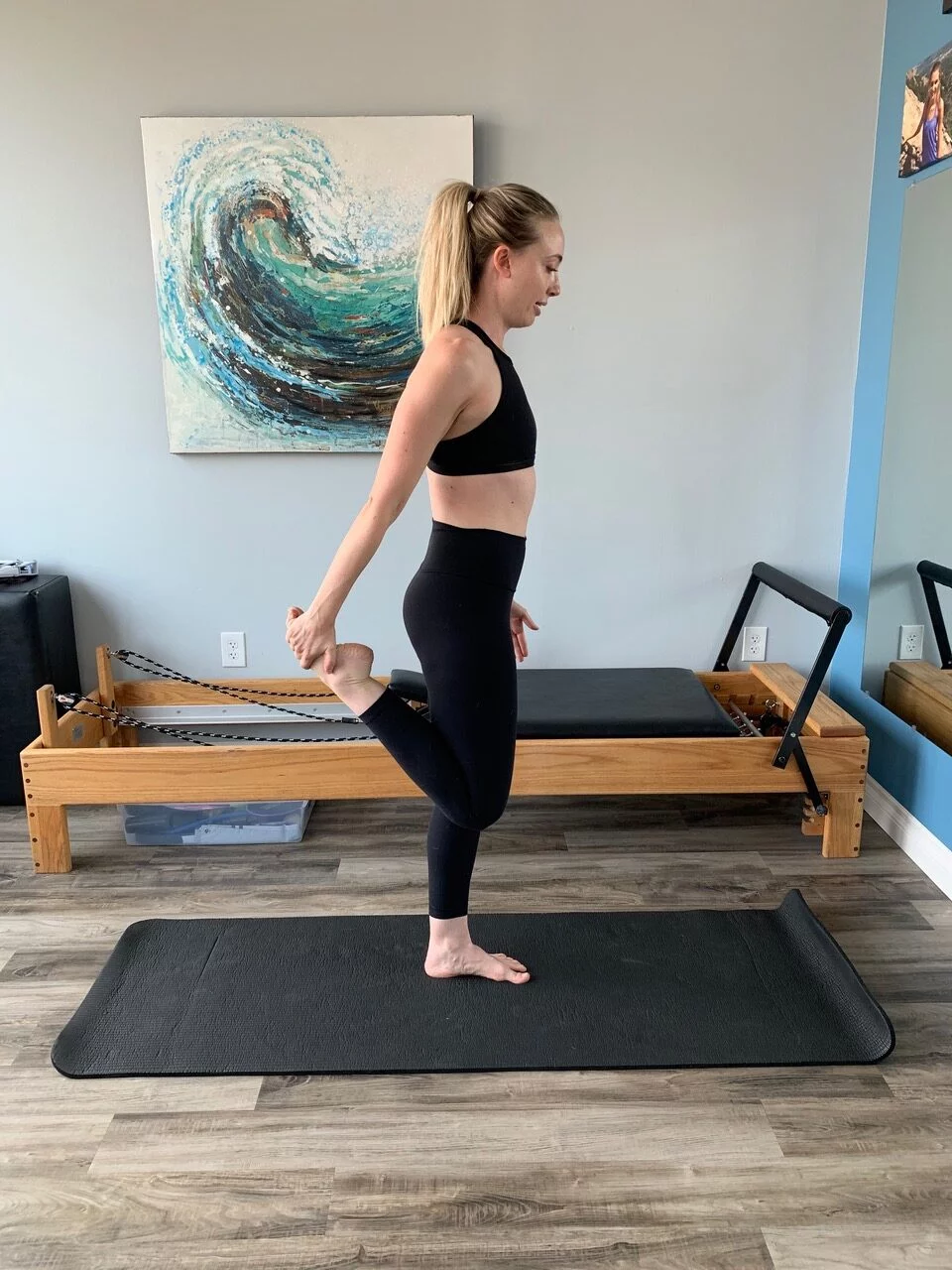
3. Half kneeling hip flexor stretch
In a half kneeling position, shift your weight forward to feel a stretch in the back leg. Try leaning away from that side to increase the stretch. Again, try squeezing your glutes on the side you’re stretching to intensify the stretch. Hold 30 seconds working up to 2 minutes on each side.
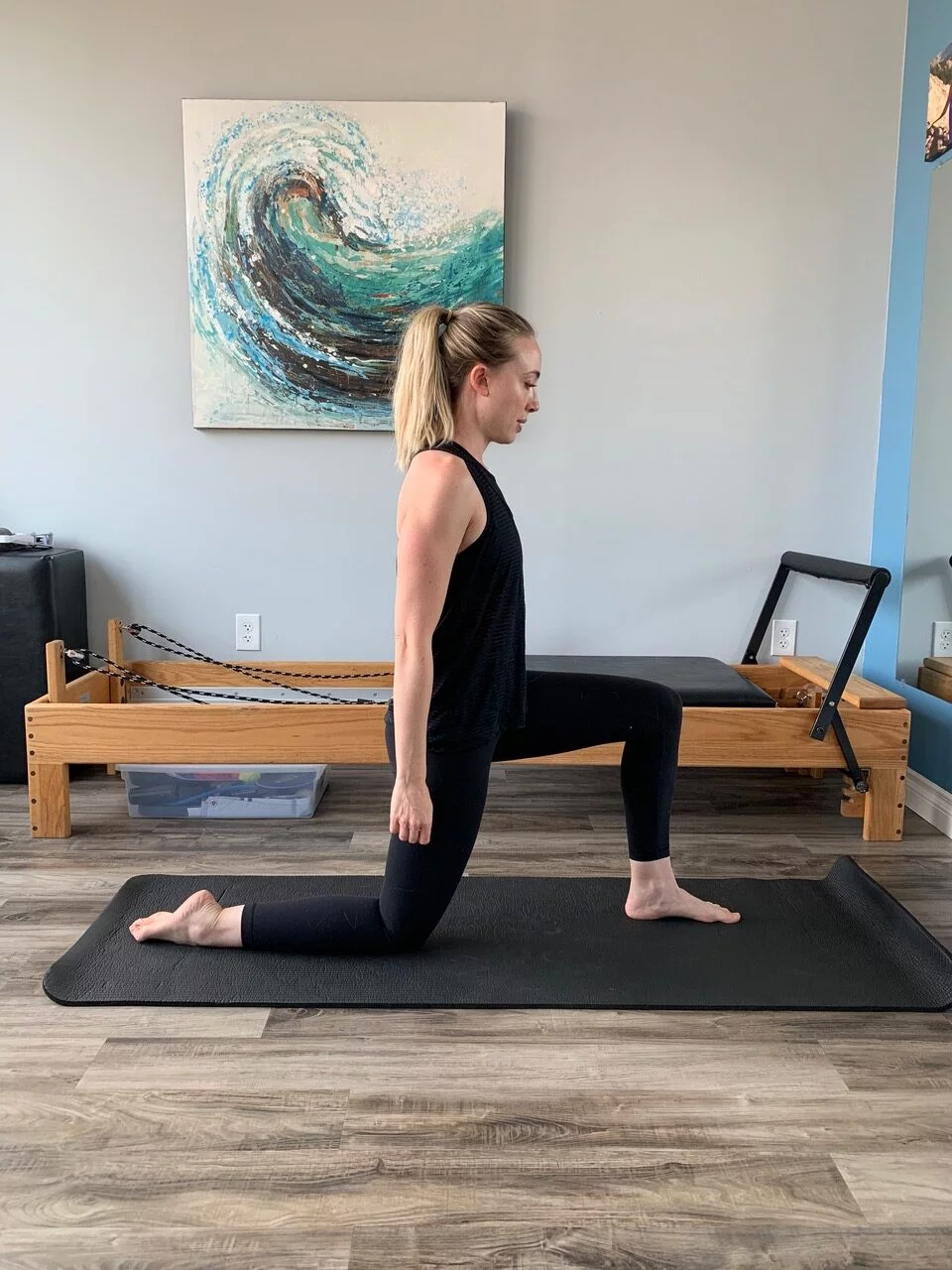
Exercise 3 – Thoracic spine mobility (3 ways)
The thoracic spine can get really stiff from breast feeding. Mobility through this part of your spine is very important with return to running to ensure you have full mobility when it comes to rotating and breathing. Using a foam roller can also be very helpful, but I find that immediately post-partum, many patients are too weak in their core to assume the proper position. Here are some other options:
1. Cat-Cow
On hands and knees, transition between arching your back and rounding your back to begin to mobilize through the area between the shoulder blades.
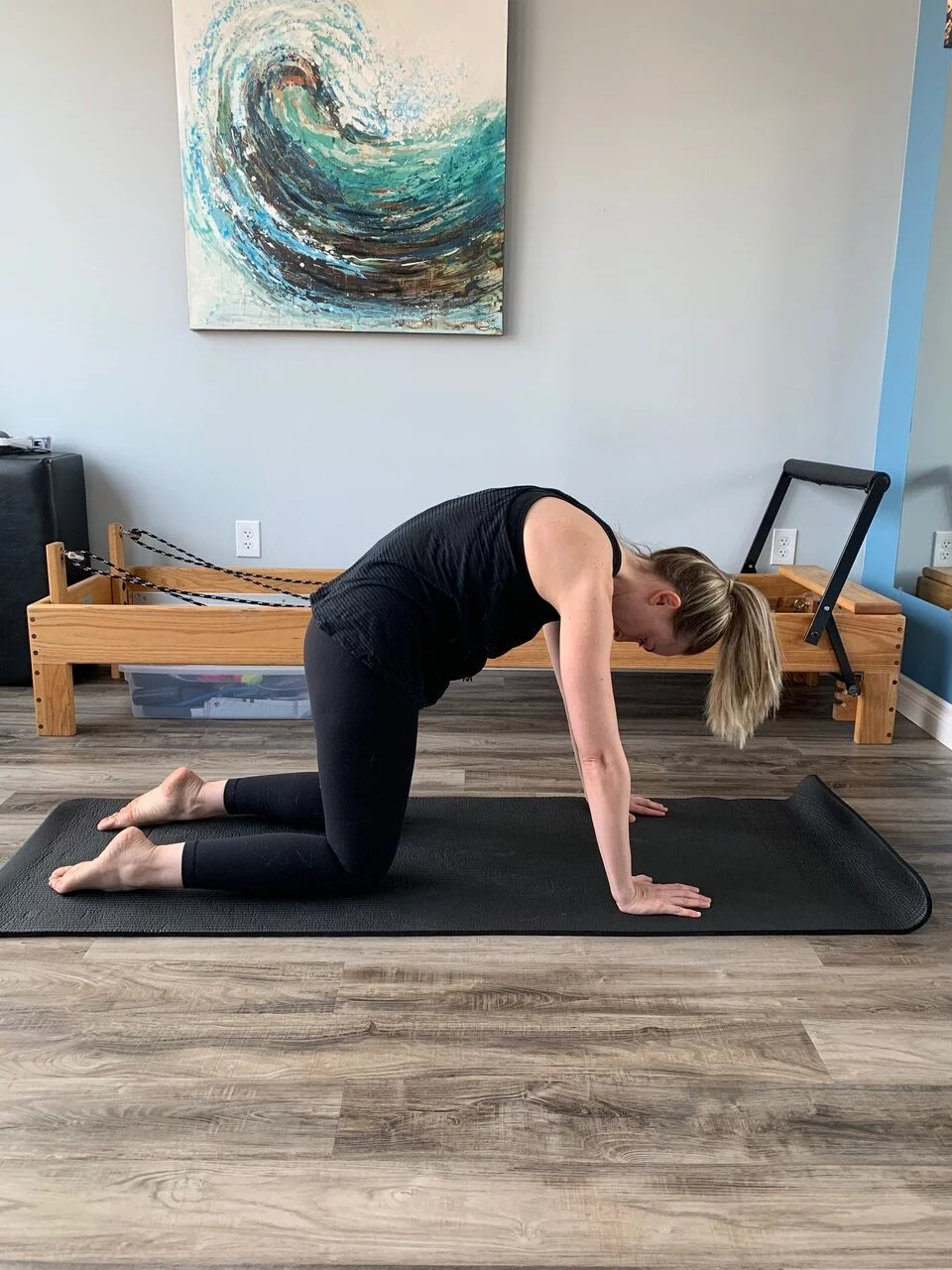
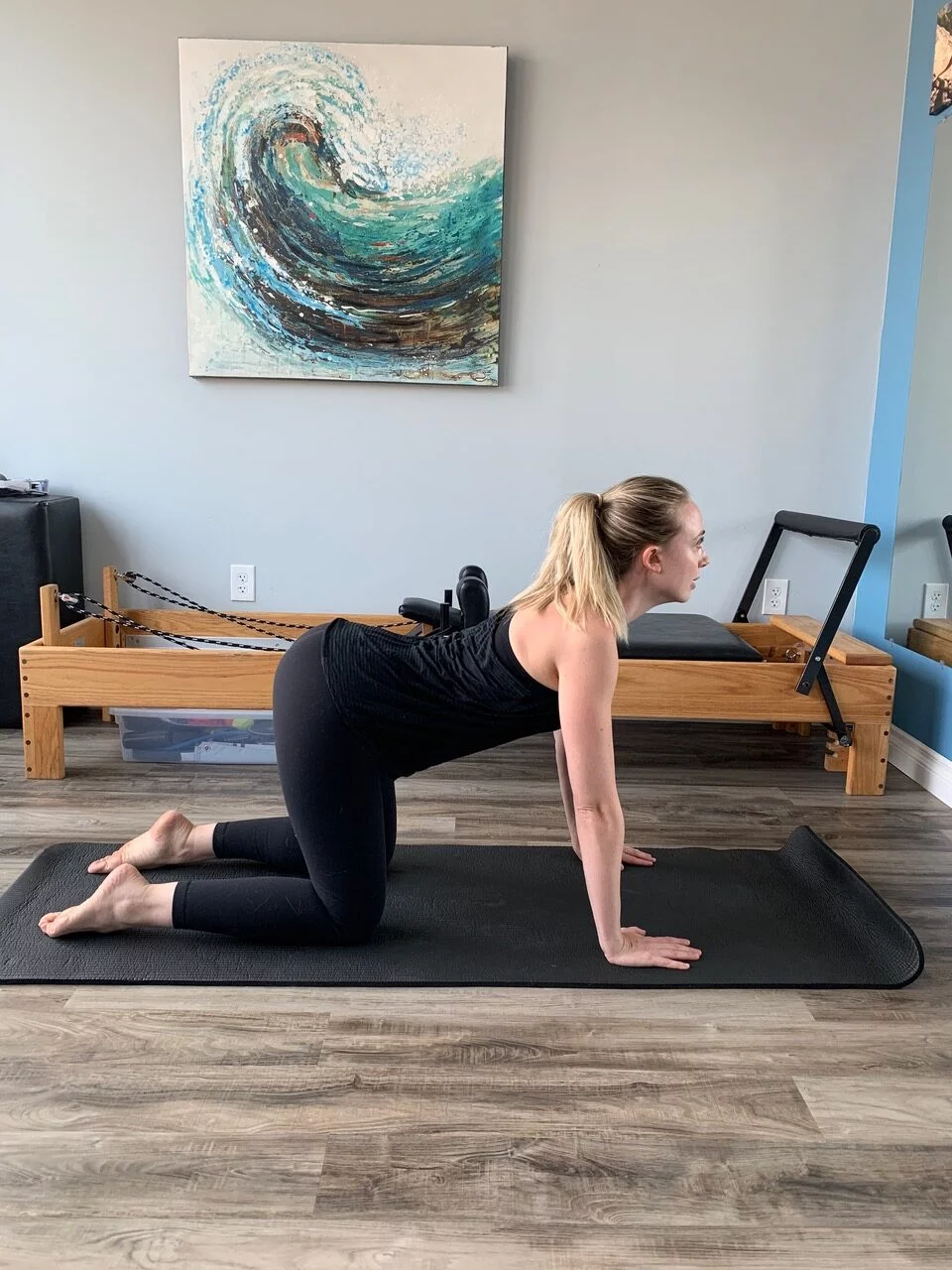
2. Thread the Needle
On hands and knees, reach through the other arm as you attempt to get your shoulder on the ground. Come back to hands and knees and try on the other side.
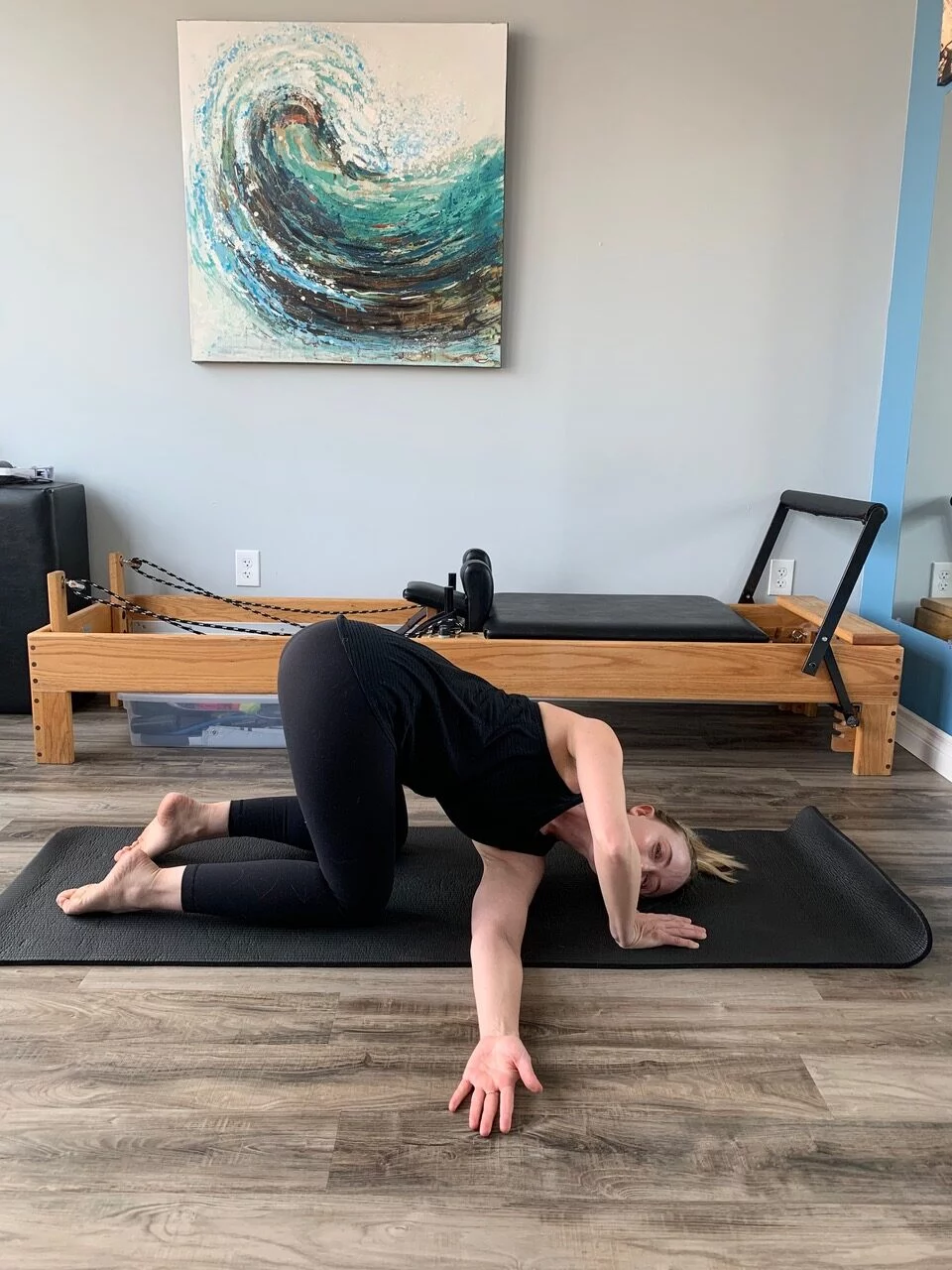

3. Child’s Pose with Foam Roller
Sit back on your feet with your knees wide. Place your wrists on the foam roller as shown (palms facing each other) to get an additional stretch of the lats and increased thoracic spine extension.
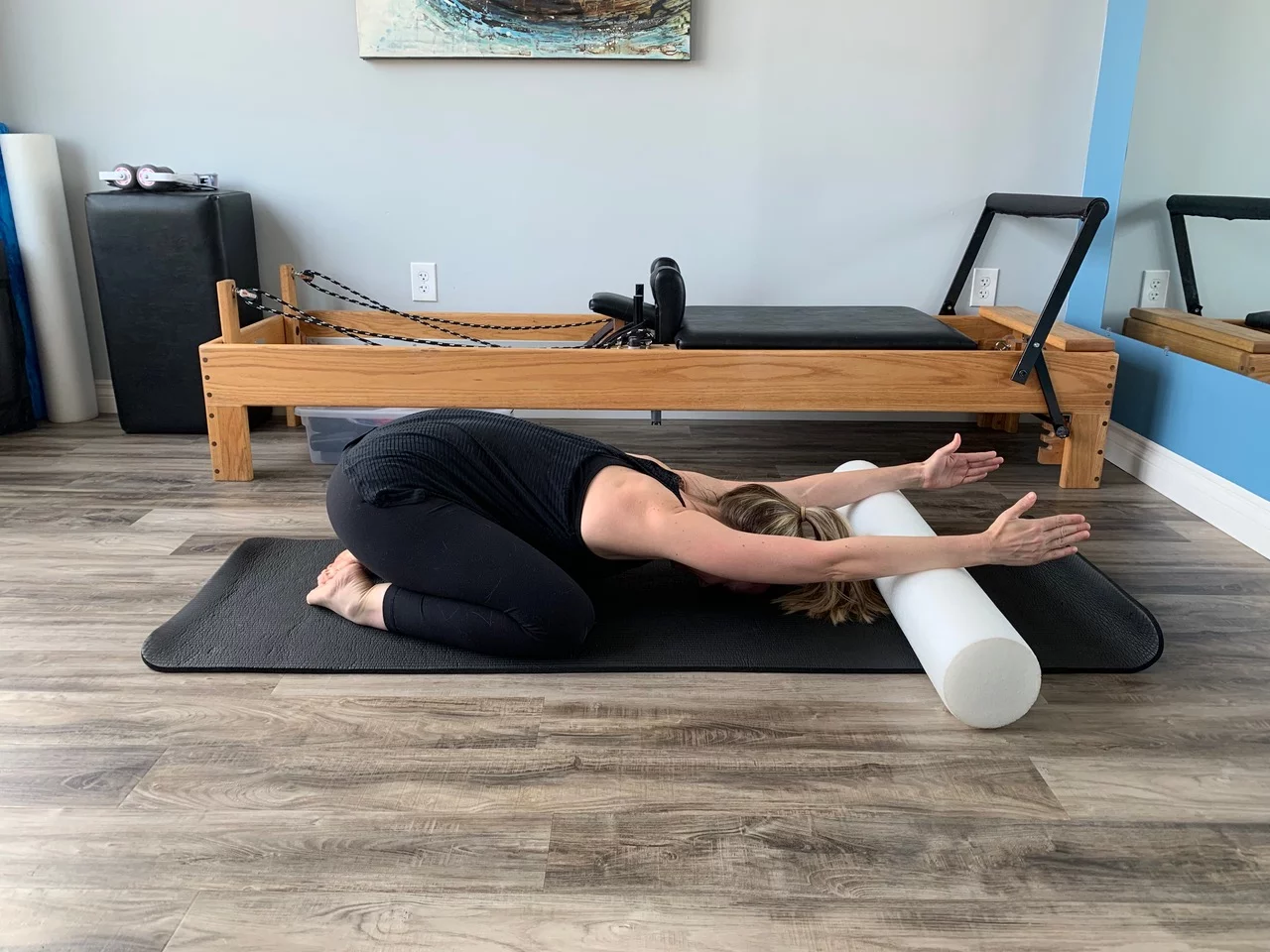
Exercise 4 – Quadruped Core (working towards a plank)
A lot of new moms are eager to get back into core strengthening, but it is extremely important that you are able to do it correctly. Signs of a core exercise being too difficult are needing to hold your breath, doming in the abdomen, loosing lower abdominal recruitment, experiencing urinary incontinence or pain/discomfort somewhere else during or after the exercise.
If you can perform exercise 1 correctly, then you may be ready to add some additional challenges. Here are some variations of core exercises that will prepare you for a plank.
1. Quadruped shoulder tap
On all 4’s, engage your core by squeezing your pelvic floor. You should see a small lift in the lower abdominals. Hold this as you tap your right arm to your left shoulder. Nothing else should move except your R arm. Lower the arm down and repeat on the L side. It is helpful to practice this exercise in a mirror to make sure you are maintaining lower abdominal activation.
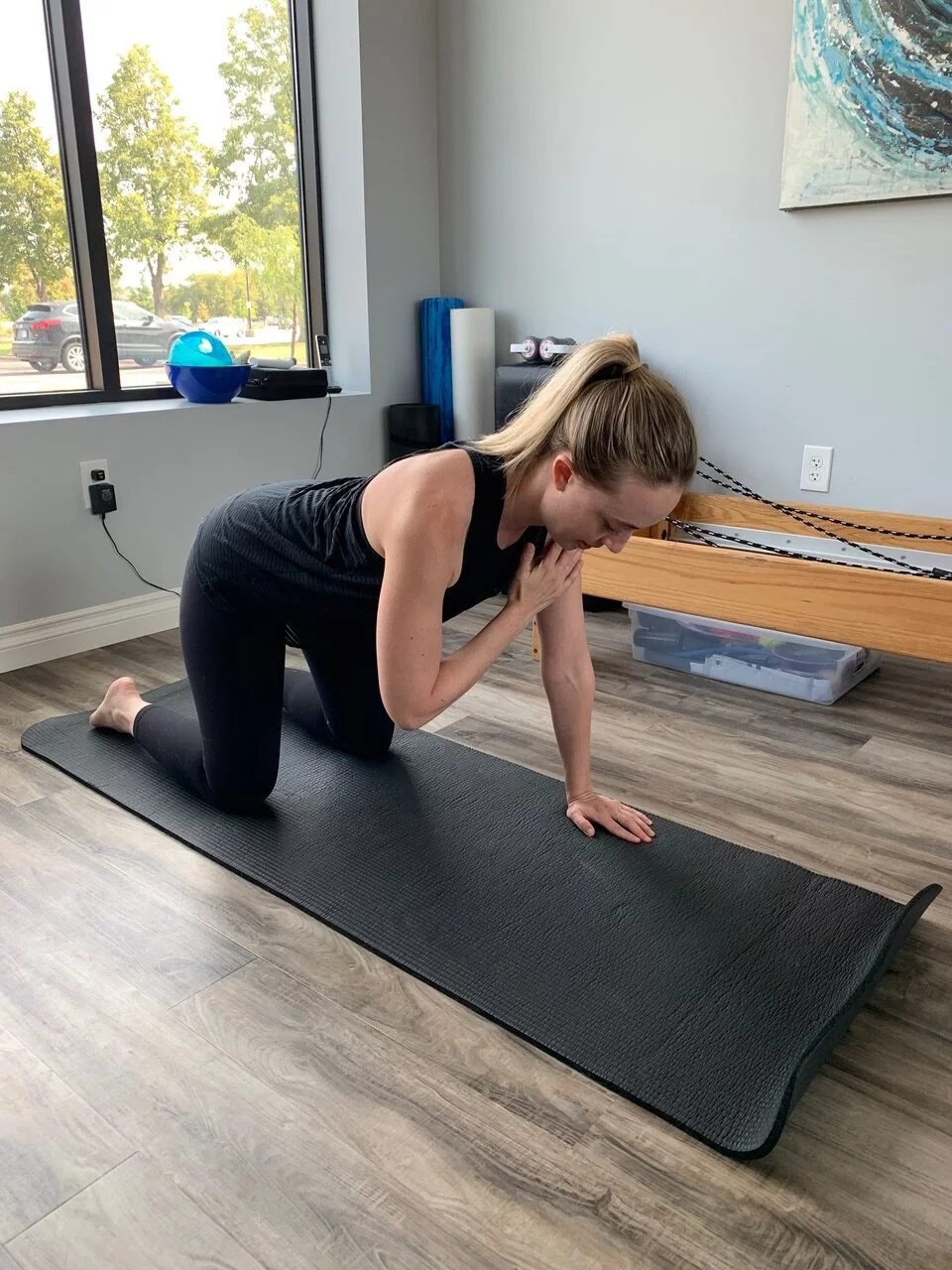
2. Quadruped forward weight shift
On all 4’s, engage your core by squeezing your pelvic floor. Shift forward slightly into a modified plank and then back. It is important to note that you are shifting from the shoulders/hips and that your torso is staying straight. As you get stronger you can shift further forward into a plank.

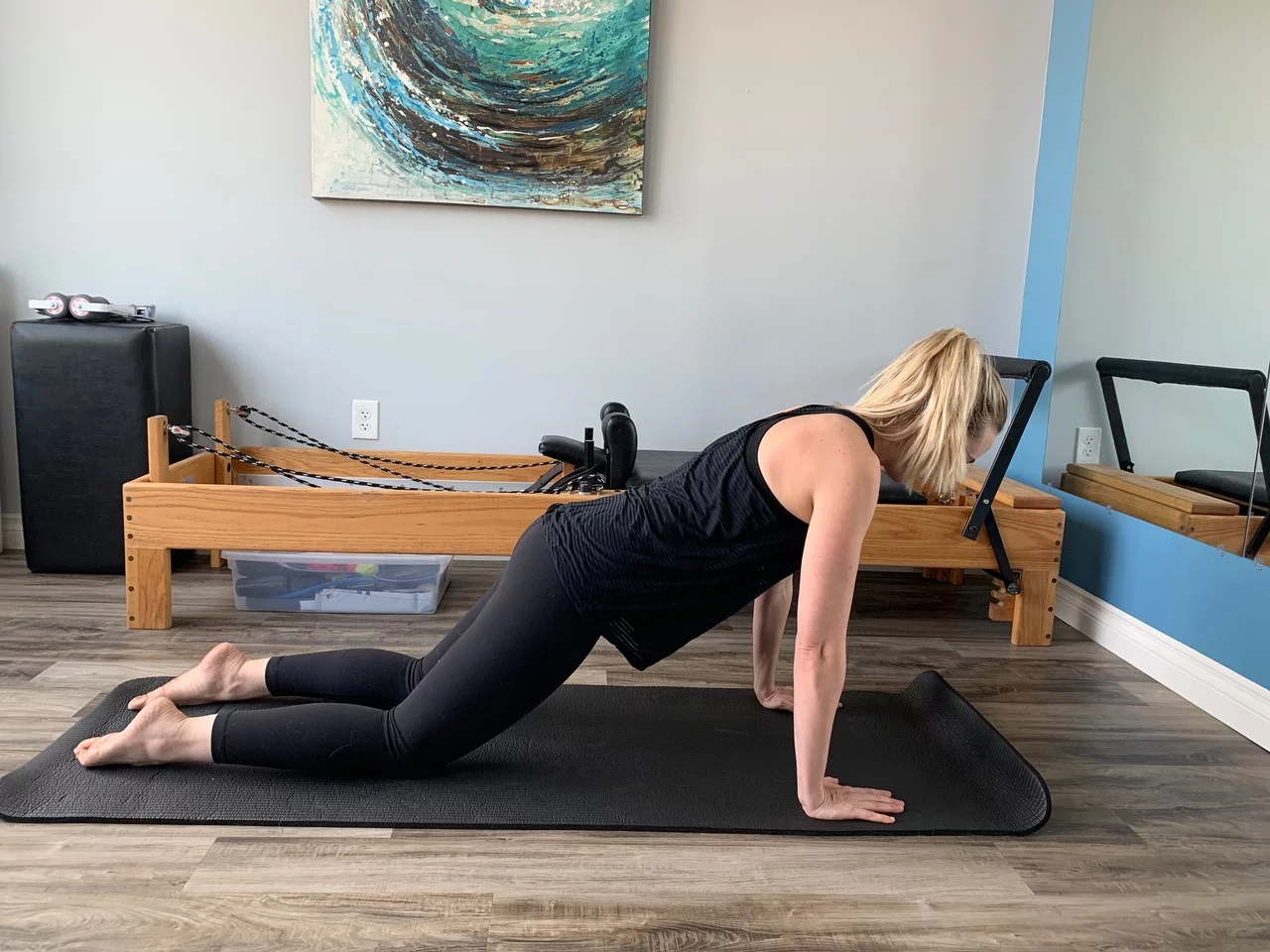
3. Quadrupled Forward Weight Shift on Ball
On your knees with your forearms on a large swiss ball, engage the core by squezzing the pelvic floor. Hold this as you shift forward from the hips and return to the start position. If this feels easy then you can add a challenge by shifting forward at the arms as well.



Exercise 5 – Bridge (3 ways)
Glut strengthening is extremely important with return to running. Your body requires adequate strength in the glute muscles to stabilize the pelvis during single limb stance. Here are a couple of exercises to get you started.
1. Basic Bridge
Engage your core by squeezing your pelvic floor, lift up into a bridge by squeezing your glutes. Lower all the way back down and relax your pelvic floor.

2. Split Stance Bridge
Separate your legs so that one leg is slightly in front of the other. Engage your core by squeezing your pelvic floor. Lift up into a bridge by squeezing your glutes and lower back down. Switch your legs so that you move the other leg closer. Perform the same sequence.

3. Single Leg Bridge
Engage your core, bridge up squeezing your glutes, straighten one leg keeping your thighs parallel, lower your leg and then lower your hips back down to the ground. Repeat the same sequence on the other side.


